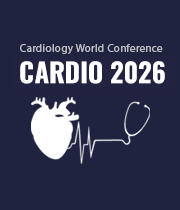Title : Risk factors for early AKI in transcatheter aortic valve implantation
Abstract:
Introduction: Transcatheter aortic valve implantation (TAVI) is an established therapy for severe aortic stenosis, but acute kidney injury (AKI) remains a frequent and serious complication. Early identification of high-risk patients may enable targeted renal-protection strategies to improve outcomes.
Methods: A retrospective cohort study was conducted of all patients who underwent TAVI at a single tertiary referral centre between 1st January 2019 and 31st December 2024. Baseline demographics, comorbidities, laboratory values and procedural details were recorded. AKI was staged per VARC-III/KDIGO staging: Stage 1 (≥1.5–2× baseline or ≥26 μmol/L rise), Stage 2 (>2–3×), Stage 3 (>3× or ≥354 μmol/L +≥44 μmol/L rise) and Stage 4 (new dialysis). Univariate screening (p<0.05) by chi-square or t-test identified candidate predictors. Significant variables (p<0.05) were included in a multivariate logistic regression model.
Results: AKI occurred in 117/541 (21.6%): Stage 1 in 80 (68.4%), Stage 2 in 4 (3.4%), Stage 3 in 14 (11.9%) and Stage 4 in 19 (16.2%). Self-expanding valves were associated with a higher AKI rate than balloon-expandable devices (26.4% vs 16.5 %, χ²=6.50; p=0.011). Valve size showed no association (p=0.778). In multivariate analysis (Table 1), frailty, diabetes mellitus and unplanned admission were independent predictors of AKI. Self-expanding valves showed a non-significant trend toward higher AKI. (OR 1.46; 95 % CI 0.82–2.58; p=0.198).
Conclusions: Early AKI affected one in five TAVI patients at our centre and demonstrated device-specific patterns: self-expanding valves carry higher overall AKI rates. Frailty, diabetes and unplanned admission independently predict AKI.



